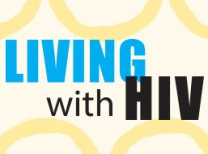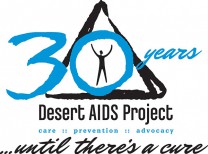The Coachella Valley has two prominent demographic characteristics: a larger-than-average senior population and one of the highest per capita rates of persons living with HIV/AIDS. You may know one of those people, whether they know their status or not. Nationally, one in five people who have HIV are unaware of it; that rate is likely higher in our area.
HIV has long been associated with gay men, and we do comprise a significant portion of the Valley’s senior population. But that doesn’t mean that all older gay men here are HIV-positive; nor does it mean anyone with HIV is by definition an older gay man. In fact, rates of HIV infection around the Valley are increasingly alarming among Hispanics, young and older alike. This may be due to lack of information; religious, social and cultural stigma; misperception of risk level; limited access to health care; and combinations of those factors. Certainly, younger gay men remain a high risk group, but uninformed, risky sexual activity among heterosexual minorities, youths and yes, seniors, is a significant concern and is driving up infection rates.
I’ve lived with and written about HIV for more than 25 years (which still amazes me). I had no symptoms until around 1995, making it just under the wire to benefit from the first medications, indeed to survive. HIV treatments continue to be refined today. They came too late for the earliest victims, but have since saved hundreds of thousands of people.
Still, living with HIV as a “manageable” chronic condition, utterly reliant on those medications and bound to a regular schedule of bloodwork, checkups and drug side-effects, can be daunting. Adherence to the meds schedule is crucial. And over time, they still may fail or create cumulative, intolerable side-effects that require a change of the regimen. The virus can mutate. One is never cured, only managed.
I’m also one of the baby boomers who comprise the largest group in the U.S. living with HIV. We never expected to be geriatric guinea pigs. No one ever got old with HIV before and no one is sure what to expect. There is rapidly accumulating evidence that simply living with HIV over time, ingesting drugs which are relatively new and therefore untested over long periods, may accelerate aging processes. Premature organ function problems and cognitive issues in some patients have been connected to both the virus and the meds. “Aging with HIV” is now a major section of HIV publications.
Desert AIDS Project is an excellent local resource for HIV information, offering free and confidential HIV testing on a regular basis at a variety of locations. Check its website at desertaidsproject.org. D.A.P. is the lead partner on Get Tested Coachella Valley that President Clinton recently praised as “a public/private partnership creating positive change.” It’s the nation’s first region-wide HIV testing effort, encouraging everyone to know their status and, if HIV positive, become connected to care.
D.A.P. has many clients of all genders and ages for whom HIV diagnosis was the biggest surprise of their lives. Manageable disease or not, if you are uninfected, trust me, you want to do all you can to stay that way.
Desert AIDS Project takes a holistic approach to health providing primary and HIV-specialty medical and dental care, as well as complementary therapies such as reiki, acupuncture, and yoga, and support services like food, housing, and behavioral health counseling. For more information visit desertaidsproject.org.








































Comments (0)